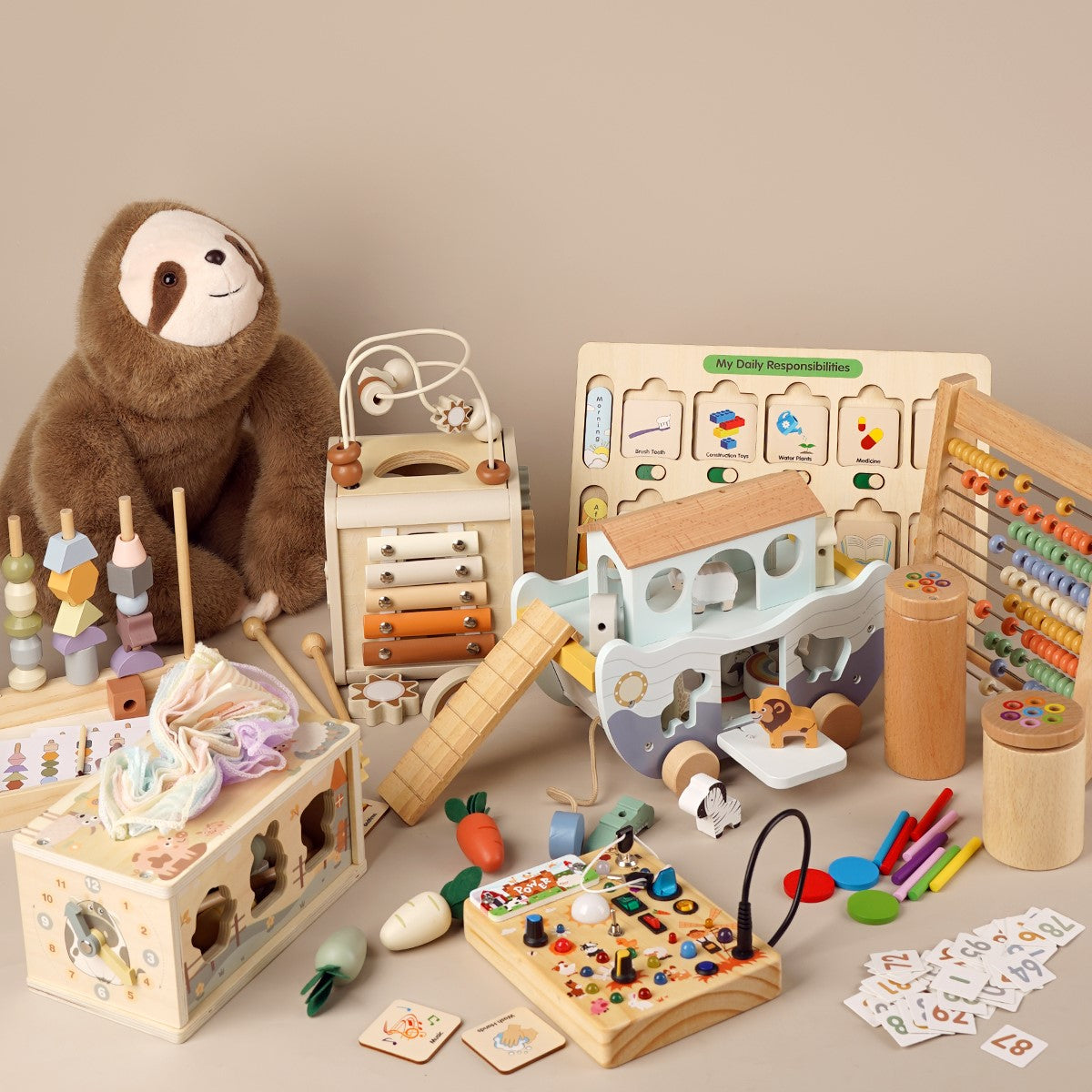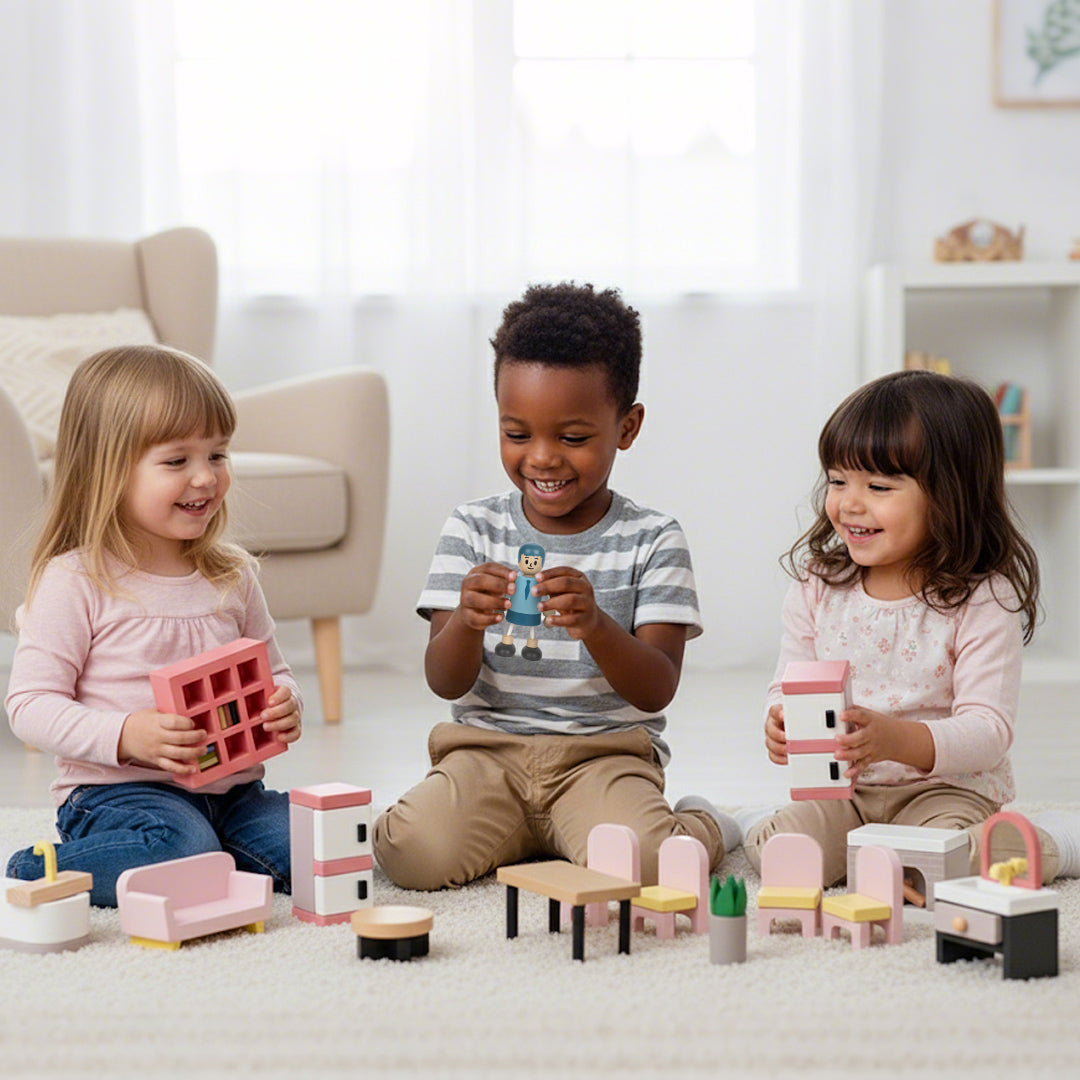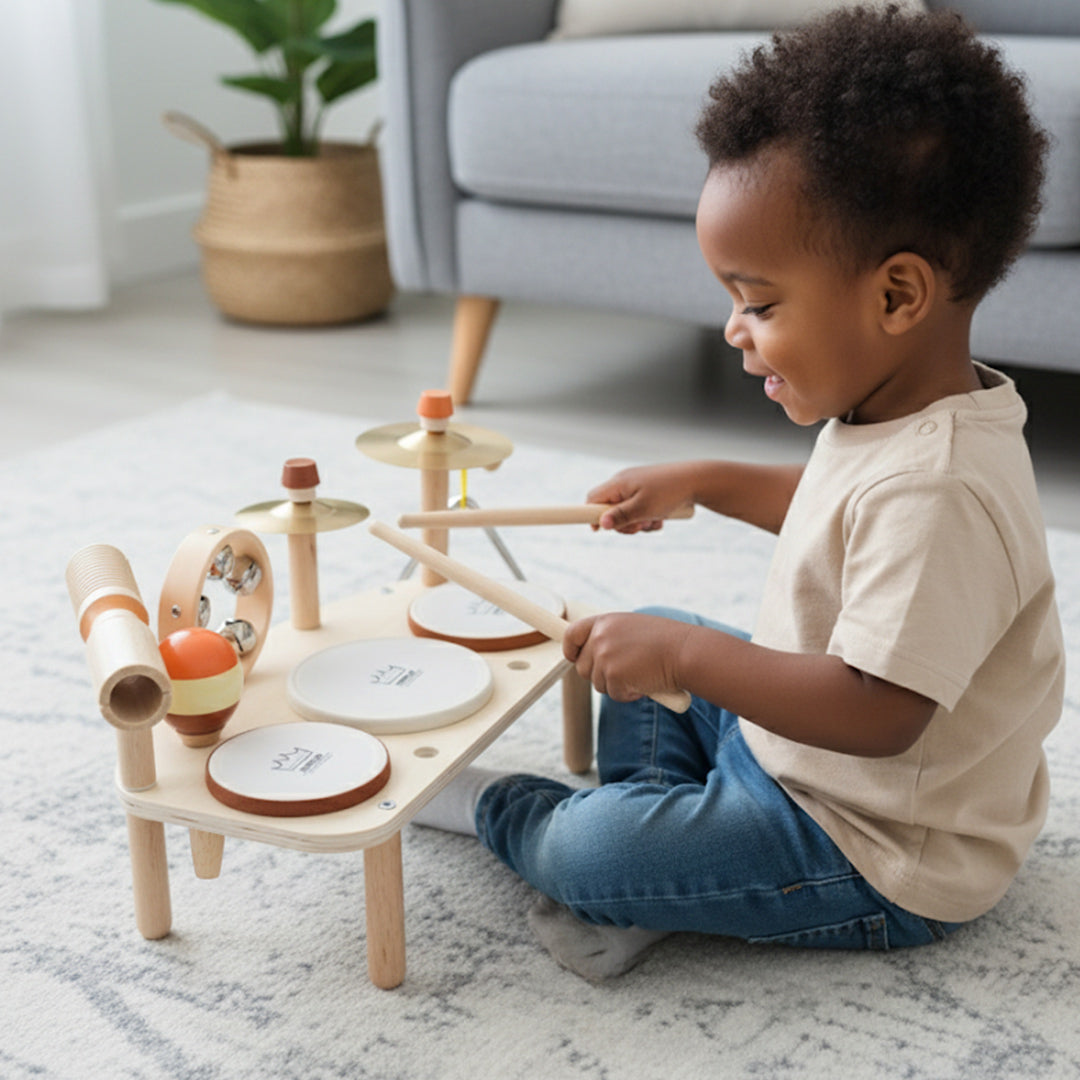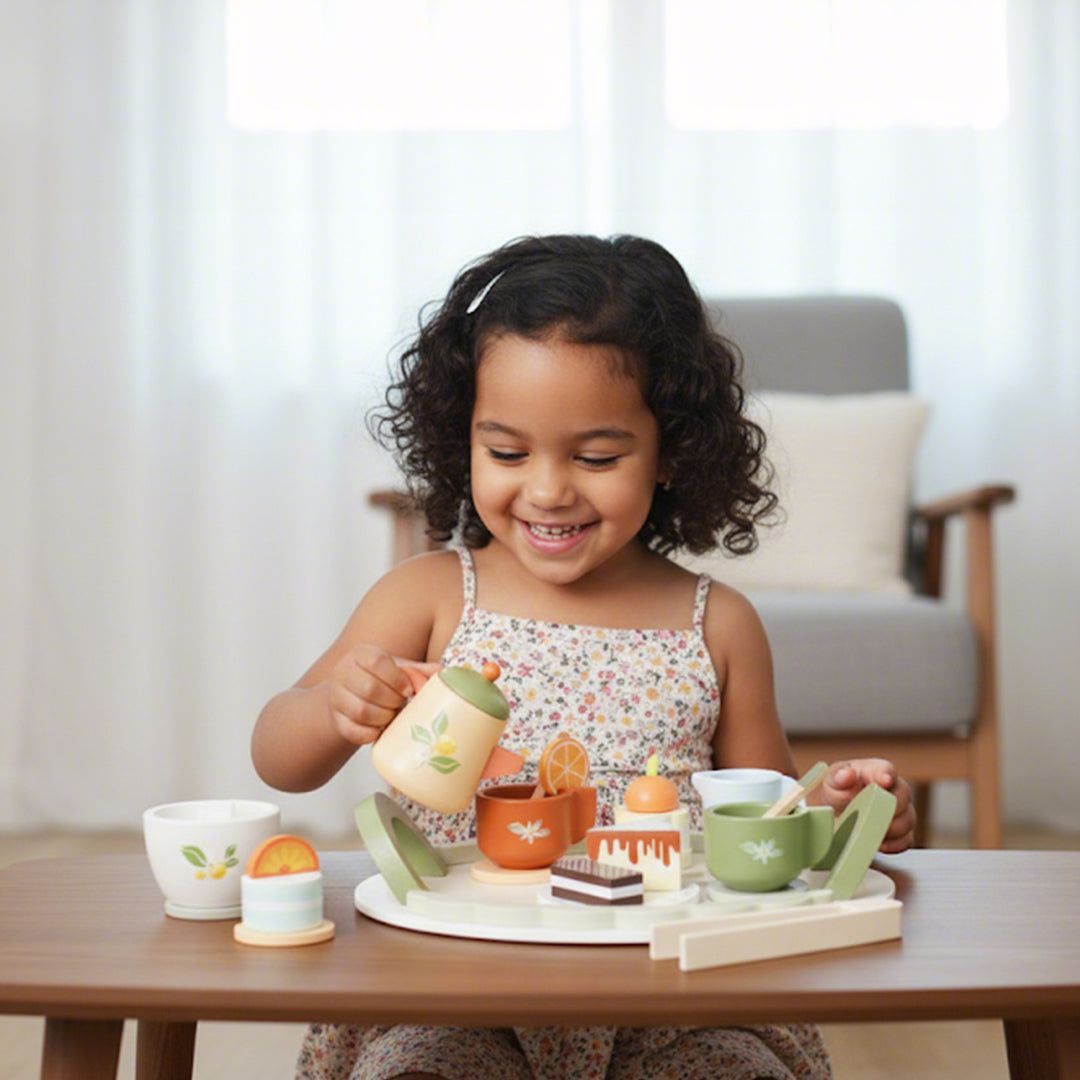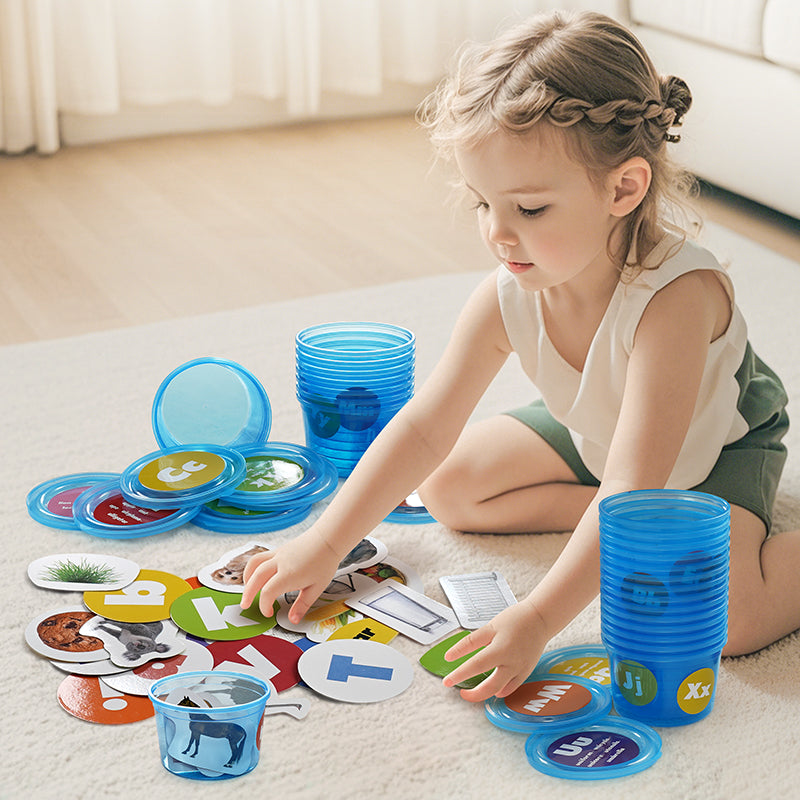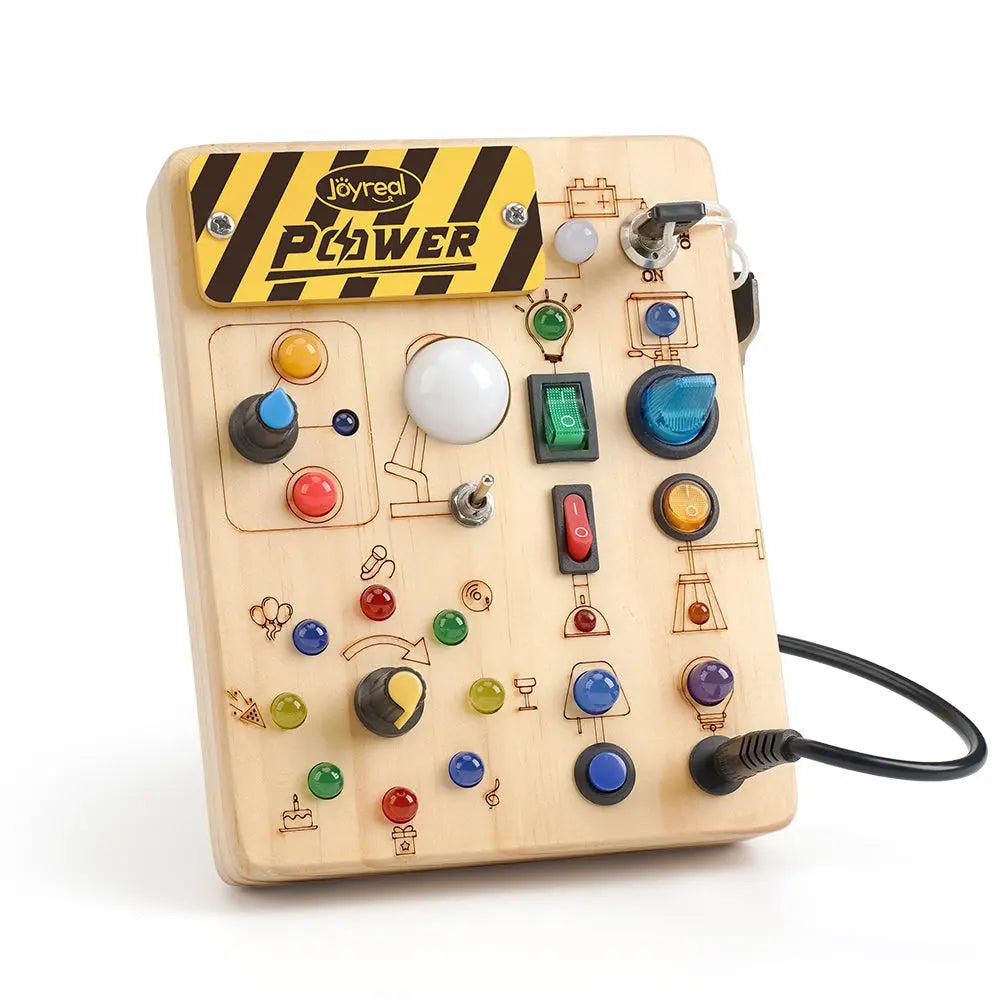Montessori-Inspired Screen-Free Toys: Engaging Gift Ideas to Spark Creativity
In a world where screens dominate playtime, parents and educators are increasingly seeking alternatives that nurture creativity, independence, and hands-on learning. Enter Montessori toys—a timeless approach rooted in Maria Montessori’s philosophy of fostering curiosity and self-directed exploration. These screen-free, purposeful toys prioritize sensory engagement, problem-solving, and fine motor development, making them perfect gifts for children of all ages. Let’s dive into why these toys matter and highlight some standout options, including the beloved Montessori busy board.
Why Choose Montessori Toys?
Montessori-inspired toys are designed to:
- Promote Independence: Children learn through trial and error, building confidence as they master tasks.
- Encourage Sensory Exploration: Natural textures, weights, and shapes stimulate tactile and visual senses.
- Develop Fine Motor Skills: Activities like grasping, twisting, and threading refine hand-eye coordination.
- Spark Creativity: Open-ended play invites imagination, allowing kids to invent their own games and stories.
Montessori toys promote learning through purposive design, fostering cognitive, motor, and emotional development by adhering to core educational principles. Here’s how they differ from conventional toys and support growth:
What to Look for in Montessori Toys
When selecting toys, prioritize:
- Natural Materials: Wood, cotton, metal, or wool ensure durability and connect children to the natural world.
- Simplicity: Avoid overstimulation; opt for minimalist designs that focus on one skill at a time.
- Purposeful Play: Each toy should have a clear learning goal, whether it’s sorting, balancing, or problem-solving.
Top Montessori Toy Gift Ideas
1. Montessori Busy Board
 A montessori busy board is a sensory powerhouse! This interactive board features latches, zippers, buttons, and knobs that mimic real-life tasks. Perfect for toddlers, it teaches practical life skills (like dressing themselves) while strengthening fine motor control. Choose one with a mix of textures and challenges to keep little hands engaged.
A montessori busy board is a sensory powerhouse! This interactive board features latches, zippers, buttons, and knobs that mimic real-life tasks. Perfect for toddlers, it teaches practical life skills (like dressing themselves) while strengthening fine motor control. Choose one with a mix of textures and challenges to keep little hands engaged.
- Skills Developed: Problem-solving, independence, coordination.
- Age Range: 2–3 years.
2. Wooden Car Ramp Toy
 Wooden Car Ramp Toy combines motion and discovery! Toddlers race wooden cars down ramps, experimenting with gravity and speed. The smooth, curved tracks and vibrant colors encourage hands-on exploration, while the sturdy design ensures durability.
Wooden Car Ramp Toy combines motion and discovery! Toddlers race wooden cars down ramps, experimenting with gravity and speed. The smooth, curved tracks and vibrant colors encourage hands-on exploration, while the sturdy design ensures durability.
- Skills Developed: Cause-and-effect understanding, hand-eye coordination, color recognition.
- Age Range: 24 months–2 years.
3. Sensory Learning Set with Xylophone

Spark auditory and tactile curiosity with the sensory learning set. This multi-activity toy includes a wooden xylophone, spinning gears, and textured beads. Children compose melodies, practice fine motor skills, and explore patterns—all while engaging multiple senses.
- Skills Developed: Rhythm recognition, sensory processing, creativity.
- Age Range: 24 months–3 years.
4. Adjustable Speed Wooden Baby Walker

Ideal for budding explorers, the adjustable speed baby walker supports early walking with a Montessori twist. Its customizable speed settings grow with your child, while the removable activity panel (with spinning blocks and shape sorters) keeps little minds engaged during play.
- Skills Developed: Gross motor skills, balance, spatial awareness.
- Age Range: 12–36 months.
Why These Toys Make Meaningful Gifts
Montessori toys aren’t just playthings—they’re tools for lifelong learning. By choosing screen-free, thoughtfully designed options like the Montessori busy board or wooden toys, you’re giving a gift that:
- Supports Developmental Milestones
- Reduces Screen Dependency
- Encourages Quality Family Time
How Do These Toys Promote Learning?
1. Encouraging Hands-On Exploration
- Sensory Engagement: Materials like wood, fabric, and metal provide varied textures, weights, and temperatures (e.g., wooden puzzles or metal insets), refining sensory perception.
- Cause-and-Effect Learning: Toys like the object permanence box or ball drop teach logical reasoning through experimentation.
2. Developing Independence & Problem-Solving
- Self-Correcting Features: Montessori materials (e.g., knobbed cylinders, shape sorters) allow children to identify and fix mistakes without adult intervention, building critical thinking.
- Real-Life Skills: Practical tools (e.g., child-safe knives, sweeping sets) mirror adult tasks, fostering confidence and competence.
3. Enhancing Fine & Gross Motor Skills
- Precision Work: Bead stringing, lacing frames, or pouring activities strengthen hand muscles for writing.
- Whole-Body Movement: Climbing triangles or balance boards improve coordination and spatial awareness.
4. Promoting Concentration & Patience
- Limited Distractions: Simple, open-ended toys (like rainbow stackers) minimize overstimulation, helping kids focus deeply.
- Repetition-Friendly Design: Children repeat tasks (e.g., transferring beans with tweezers) to master skills, reinforcing perseverance.
5. Academic Foundations
- Math: Number rods or spindle boxes introduce quantity and symbols concretely.
- Literacy: Sandpaper letters and movable alphabets link touch/sight to phonetic learning.
- Science/Nature: Botany puzzles or magnifying glasses encourage observational skills.
6. Social-Emotional Growth
- Collaborative Play: Work mats and communal materials (e.g., building blocks) teach sharing and teamwork.
- Emotional Regulation: Unstructured play reduces frustration by allowing child-led pacing.
Final Thoughts
In a fast-paced digital age, Montessori toys offer a refreshing return to simplicity and purpose. Whether it’s a bustling toddler captivated by a busy board or a preschooler sorting shapes, these toys meet children where they are, nurturing their innate desire to explore and grow. This holiday season (or any occasion!), consider gifting an experience that sparks joy, creativity, and a love for learning—one wooden block, latch, or bead at a time.
Maybe it will be helpful for you:
Recent Post

What Finally Helped My Toddler Speak Up?
If you’re a toddler mom, you already know how much emotional weight...

Joyreal Christmas Toys Deals 2025
Enjoy instant savings across nearly every category, from early lear...

How Wooden Montessori Toys Support a Sustainable Childhood
Most parents don’t say it out loud, but many feel the same quiet fr...

Top Christmas Gifts to Help Kids Communicate Better This Holiday Season
The holiday season brings joy, family bonding, and endless opportun...

How to Make DIY Printable Communication Boards
Communication is at the heart of every child’s development — and fo...

Top 5 Christmas Gifts That Bring Families Closer (2025 Guide)
Christmas isn’t just about the gifts — it’s about the moments we c...

Top Musical Christmas Gifts for Toddlers & Preschoolers 2025
Why Musical Gifts Are Perfect for Toddlers and Preschoolers Music h...

Joyreal AAC Devices Wholesale Partner
In today’s educational and therapeutic environments, speech therapi...

Joyreal AAC Device – Big Sale for Autism & Speech
Every Voice Deserves to Be Heard Imagine your child looking up at y...

How to Choose Safe & Educational Toys for Christmas 2025
When “Just a Toy” Means So Much More If you’re a parent, you know t...
